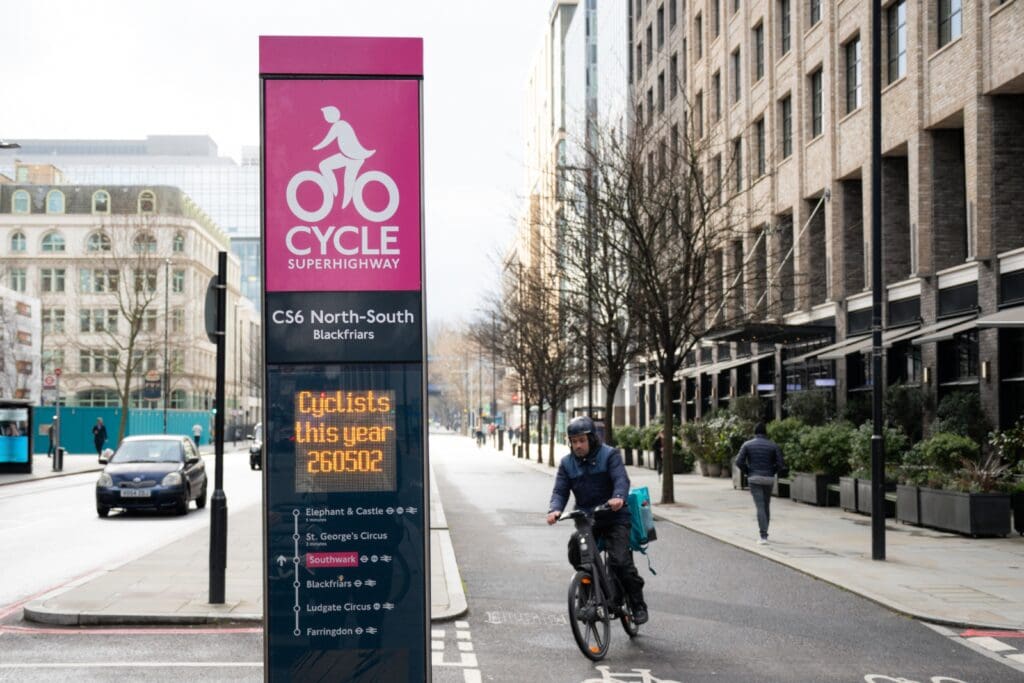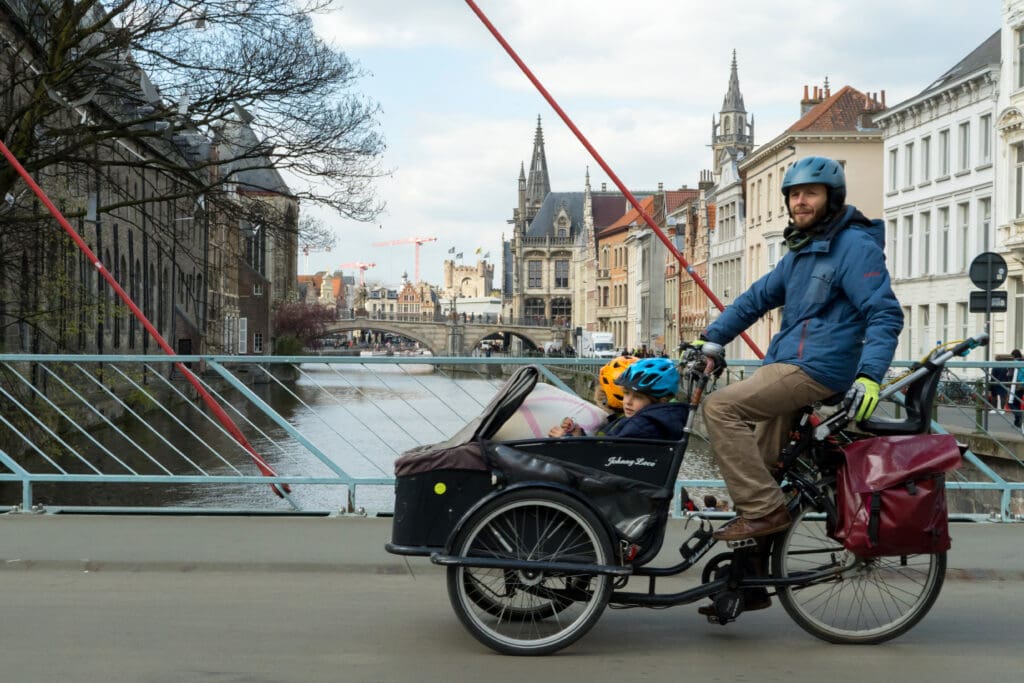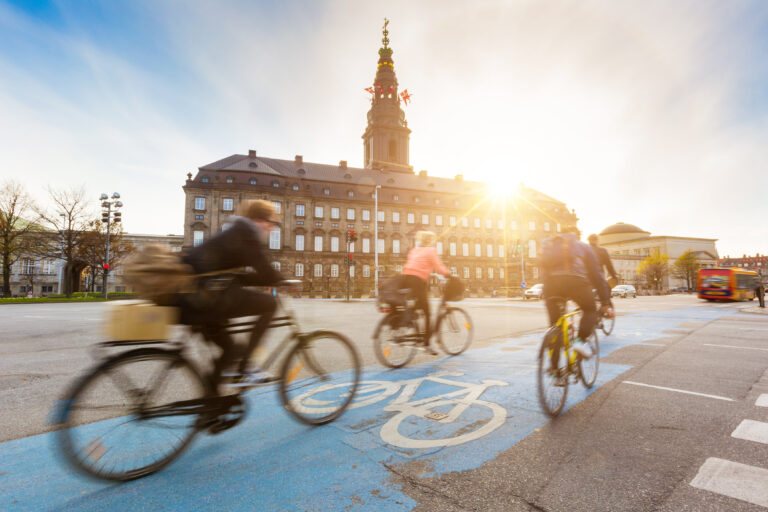Exploring bike-friendly cities with Dr. George Liu
When someone says “bike-friendly cities,” places like Copenhagen and Amsterdam likely come to mind. Some Scandinavians and Dutchmen and women even like to joke that they were born on a bike. After all, cycling has been part of these areas’ DNA for generations, helping these same regions rise in sustainability rankings as well. But as sustainable transport becomes a top priority for cities worldwide, those newer to urban cycling are looking to get into gear, too.
To help us explore recent success stories, UMX caught up with none other than Dr. George Liu, Director of CityUX and author of several free online courses from UMX on urban cycling, including Cycling Insights: Lessons from Europe, Designing the Cycling City and Planning the Streets of the Future. (You might also recognize him from his vibrant cameos in dozens of UMX’s videos on YouTube!) We’re confident that these learnings can help cities big and small stop spinning their wheels and get on the right track with their urban cycling strategy.
Paris is always a good idea
France is practically synonymous with bikes thanks to the world-famous Tour de France — but have you seen Paris lately?! In light of the COVID-19 Pandemic in 2020, the City of Light got to work on its urban cycling infrastructure. As George pointed out, “there’s usually a lag between when the infrastructure gets built and when actually people use it in practice so that we can collect data.” It can be difficult for researchers to predict if and how residents will adopt these changes to their environment. Yet over four years later, the results are in: Paris’ massive increases in cycling are undeniable.
“Essentially, it’s a movement,” George continued. “It not only transformed the mobility system but there’s been so much cycling that the qualitative experience of the urban environment is very different these days, especially in the middle city centre.” (This writer felt that way, too, when she travelled to Paris in May 2024, five years after her last visit.) That movement was spearheaded by mayor Anne Hidalgo, whose vision created a chain reaction among Parisians to embrace life on two wheels. As George explained, “Enough people clearly bought into that vision to make it happen,” despite little experimentation across the city’s arrondissements, which some planners may have preferred.

London: Calling the shots a little differently
Contrary to Paris’ centralised approach, London delegated its cycling developments to its boroughs. George noted that “since individual boroughs could choose their level of investment in bicycle infrastructure, some chose to invest way more than the others.” That meant that by the time the pandemic hit, several parts of the city were already boasting higher biking rates, like the Mini-Holland scheme in the outer boroughs.
Also unlike in Paris, where biking went hand-in-hand with an overarching vision, “the reason for London’s success,” George said, “has a lot to do with just making the physical space for cyclists.” Even those who have never been to the UK capital can tell from scenes in movies and TV shows that it has always been a remarkably dense city. “In contrast to American cities where you have 10- or 12-foot lanes,” George remarked, “London can physically restrict you as a cyclist. Between the lorries and the double-decker buses, it feels like there’s no space to squeeze by.”
London took a note from other cities in the Netherlands, Belgium, Germany, and Denmark, and took away entire lanes from vehicular traffic along major urban arteries to create “cycle highways” or “fast cycle routes” — a topic that George covered in his PhD and in the 2018 paper he co-authored. “On the surface level, there was a lack of space to make cycling comfortable,” George explained. “So by investing in two-way bicycle infrastructure, cycling became palatable in the city, whereas before there was really a sense of danger.” He mentioned that one need only look to other dense metropolises like Hong Kong to see what London felt like before these changes.

Going Dutch in Belgium – Dutch cycling inspiration
But what about Europe’s mid-sized cities? One example George pointed to was Ghent, Belgium. Inspired by their neighbours in the Netherlands, Groningen in particular, Ghent didn’t simply close off lanes to vehicular traffic in 2017 — they prevented traffic from entering the city centre. Instead, as George elaborated, “Since most European cities have a ring road, you divide up the city centre into quarters, and then vehicles must go back to the ring road in order to go from one quarter to another,” thereby penalising drivers by making them go in circles, literally.
These bold measures directly promoted urban cycling. How? Now only pedestrians and cyclists are the only ones who can cut straight through with a direct path. “It disproportionately benefits bikes to have a circulation plan like that because then cycling ends up being the fastest out of all the transport modes.” This affects not just private vehicles but also logistical ones, as more businesses lean on cargo bikes for their last-mile logistics. As George declared with his signature gusto, “It really changes the calculus of how people choose their mode of transport!”
Getting started and tackling speed bumps
George was careful to mention that Copenhagen and Amsterdam still rightly deserve their place in the cycling spotlight, as they continue to replace cars for bikes, even though it’s not as obvious anymore. “If you go from one cyclist an hour to two cyclists an hour, or 10 to 20, it’s very noticeable, not only in the statistics but also qualitatively in the urban environment,” he said. “If Amsterdam added 10% more cyclists to its already existing 30-40%, it actually would feel less impressive than if a city like London or Paris doubled from 5% to 10%.” It’s the law of diminishing returns at work.
What that means for cities newer to urban cycling is that your first moves matter a lot. George remarked, “The usual tendency is to build bike lanes where there’s room and skip over the sections where there’s no room.” However, he continued that “it takes a certain level of commitment to construct a network and do what it takes to make sure that the whole thing is built out to specific high standards.” That could result in taking away parking, redesigning bus stops, delaying traffic in general, and reconfiguring private property access. (Try it yourself with the street simulator featured in the Planning the Streets of the Future course that George co-authored.)
We know what you’re thinking: That’s not going to sit well with some city stakeholders… “I’ve been to public consultations in my neighbourhood,” George shared, “and I noticed that the loudest voices are the ones who oppose a particular project; any cycling project will tend to have this impression on the outsider.” But in hindsight, if the infrastructure meets a high bar across the entire city map, people are inclined to backpedal their criticisms and jump on the bandwagon. The trick is to avoid gaps where cyclists are forced to share the road with mixed traffic, which can significantly degrade the overall experience.
However, George argued that the biggest challenge for planners is to maintain a healthy connective tissue throughout the overarching mobility plan beyond just cycling. In his words, “Rather than focus on individual modes of mobility, we need to think about how they connect together to make a system that is less dependent on automobility.” He highlighted the comparison between train stations in the Netherlands, where bikes are “neatly parked in designated areas underground,” and Munich, where bikes as well as e-scooters are “littered everywhere around the station with no real bike planning.” He said the even bigger trick for cities is to figure out how urban cycling and public transportation can work in tandem.
What are you and your city waiting for? Get back in the saddle and get started on a free online course on urban cycling today.

Adina Rose Levin
Adina Levin was born and raised in Chicago, and clocked in over 10 years in New York City before moving to Barcelona. As a freelance writer and creative strategist, she explores cities, culture, media and tech.

Dr. George Liu
Dr. George Liu is the director of learning at Urban Cycling Institute. He collaborates with the EIT, producing City Unboxed for the Urban Mobility Explained YouTube channel





